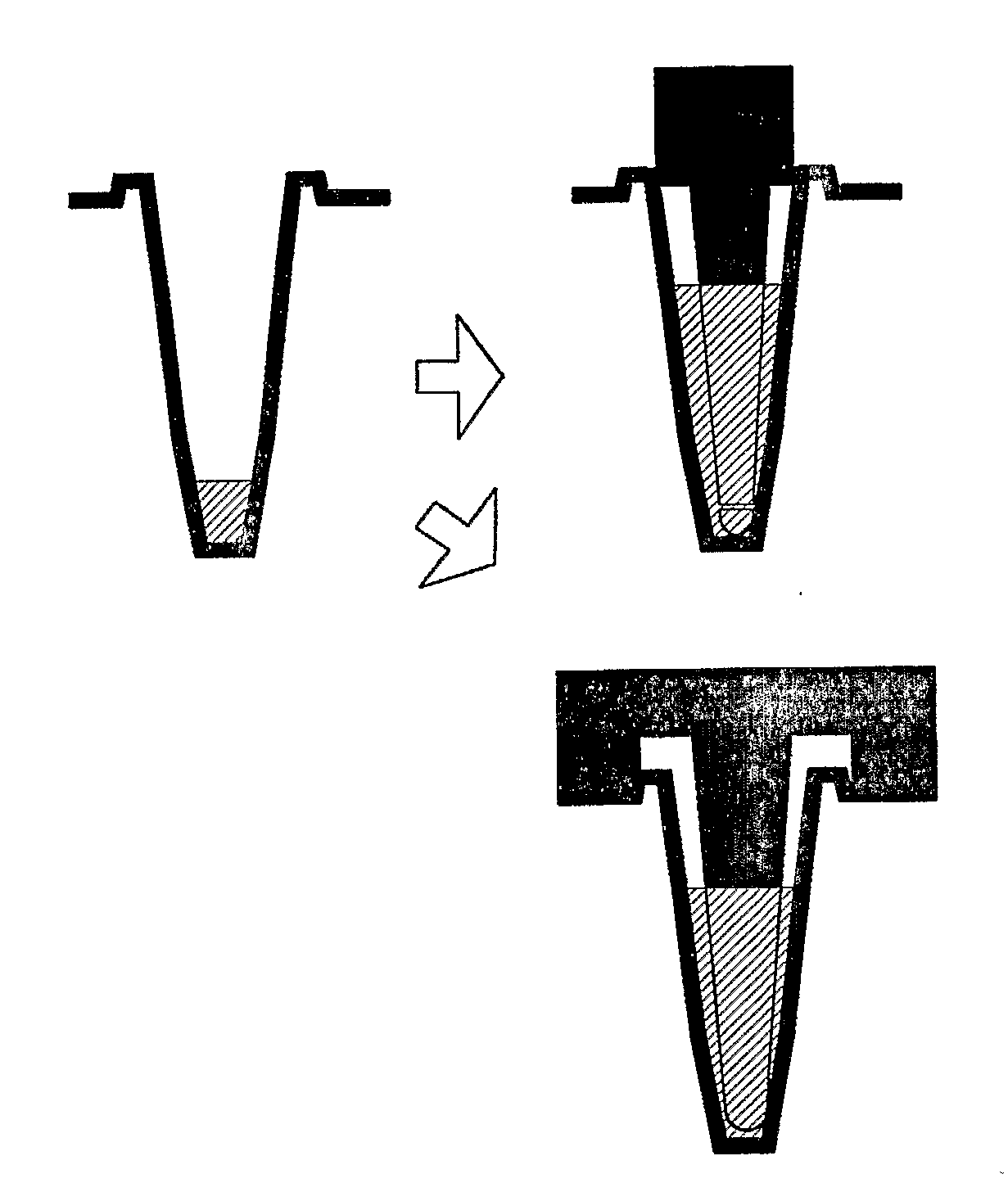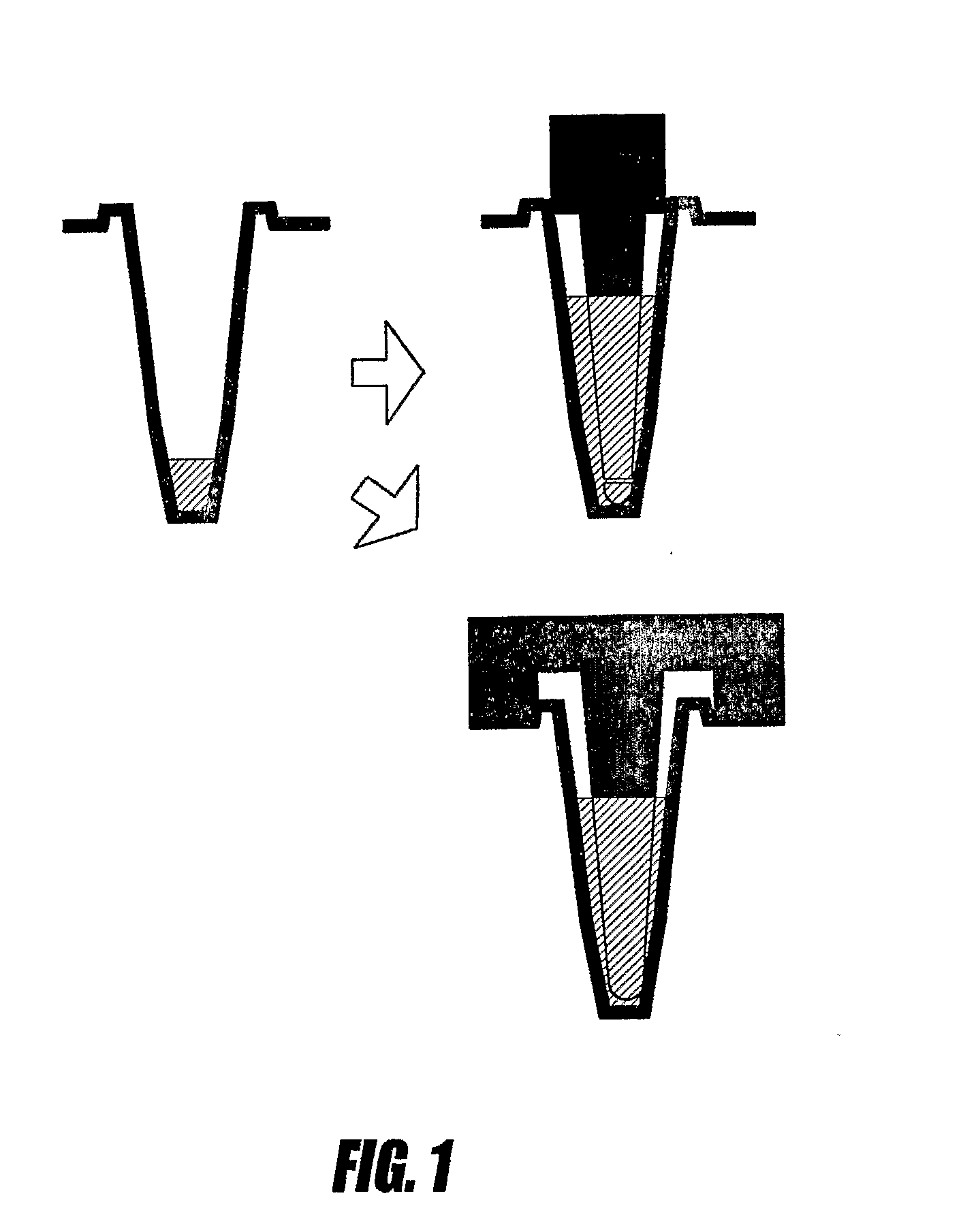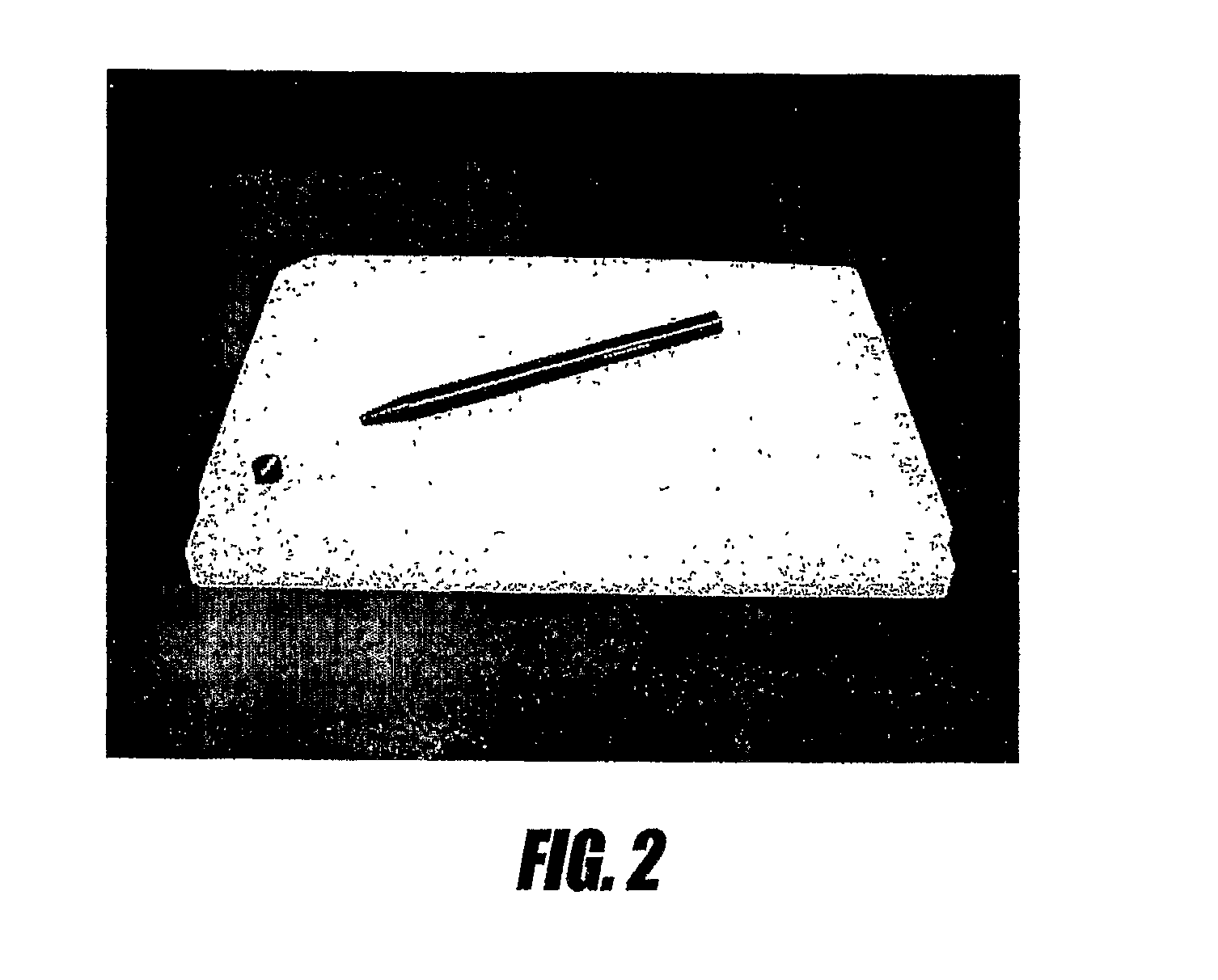Method of minimizing reagent consumption in microplate-based reactions
a microplate-based reaction and reagent technology, applied in biochemistry apparatus and processes, laboratory glassware, instruments, etc., can solve the problem of high cost of reagents, and achieve the effect of increasing the surface area of mrna-containing solutions
- Summary
- Abstract
- Description
- Claims
- Application Information
AI Technical Summary
Benefits of technology
Problems solved by technology
Method used
Image
Examples
embodiment 1
cDNA Synthesis From Synthetic mRNA
[0032]An oligo(dT)-immobilized microplate, known commercially as a GenePlate®, containing oligo(dT) covalently immobilized in the area of each well that would be covered by 80 μL of liquid (the “80 μL area”), was employed to produce cDNA from synthetic mRNA in the following manner. 100 μL of synthetic RNA34, which contains polyA40 sequences, was suspended in a lysis buffer. Such lysis buffers are known in the art; in a preferred embodiment, the lysis buffer comprises detergent (for example, 0.5% N-Lauroylsarcosine and 0.1% IGEPAL CA-630), a salt (for example, 4×SSC (0.6 M NaCl, 60 mM sodium citrate, pH 7.0)), a chelating agent (for example, 0.1-5 mM EDTA), a pH buffer (for example, 10 mM Tris HCl, pH 7.4), 1.791 M guanidine thiocyanate, RNAse inactivating agents (for example, proteinase K or 2-mercaptoethanol), tRNA (included in order to inhibit non-specific absorption of blood-derived DNA and RNA to filter plates), and exogenous DNA (for example, 1...
embodiment 2
Combinatorial Chemistry Synthesis
[0035]In another embodiment of the invention, the method may be applied to solid-phase combinatorial synthesis. Such methods have been known since the 1960's. In this embodiment, the microplate functions as a cross-linked, insoluble polymeric material that is inert to the conditions of synthesis. A solid phase is linked thereto via a linker; examples thereof include carboxamide linkers such as methylbenzhydrylamine, an alcohol linker such as those based on the tetrahydropropanyl protecting group or trityl group, amine linkers, or traceless linkers such as silyl linkers. The solid phase linked to the microplate in each well, such as the initial monomer of an oligomeric molecule, is brought into successive contact with a solution of specific monomers in a randomized fashion to produce a set of unique oligomeric products in the wells of the microplate. As these reagents can be expensive, the use of a pestle that does not interfere with the process of th...
embodiment 3
Enzyme-Linked Immunosorbent Assay
[0037]In another embodiment of the invention, the method may be applied to enzyme-linked immunosorbent assays (ELISAs). In these assays, an antigen of interest is immobilized on a substrate, typically the well of a microplate. Next, a liquid suspected of containing antibodies to the antigen, such as serum from a patient, is placed in the well. If the liquid contains such antibodies, those antibodies will bind to the antigens on the plate. Then, a second antibody, typically an anti-human immunoglobulin coupled to an enzyme is introduced to the well. This second antibody binds to the first antibody, if present. Finally, a chromogen or substrate which changes color when cleaved by the enzyme attached to the second antibody is introduced. The signal strength of this chromogen will be improved as more of the immobilized antigens participate in the reactions generating the signal. However, it is desirable to economize on the expensive or scarce (in the cas...
PUM
| Property | Measurement | Unit |
|---|---|---|
| volume | aaaaa | aaaaa |
| volumes | aaaaa | aaaaa |
| temperatures | aaaaa | aaaaa |
Abstract
Description
Claims
Application Information
 Login to View More
Login to View More - R&D
- Intellectual Property
- Life Sciences
- Materials
- Tech Scout
- Unparalleled Data Quality
- Higher Quality Content
- 60% Fewer Hallucinations
Browse by: Latest US Patents, China's latest patents, Technical Efficacy Thesaurus, Application Domain, Technology Topic, Popular Technical Reports.
© 2025 PatSnap. All rights reserved.Legal|Privacy policy|Modern Slavery Act Transparency Statement|Sitemap|About US| Contact US: help@patsnap.com



